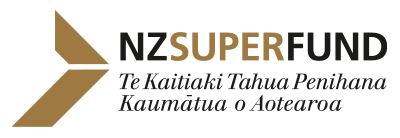Media statements
GNZS Update Strategic Asset Allocation (21 December)
POSTED ON: 21 December 2007
Share:
Auckland (21 December 2007) - The Guardians of New Zealand Superannuation today released their updated Strategic Asset Allocation (SAA). This specifies the Guardian’s target asset class weights for the New Zealand Superannuation Fund (Fund). The update follows two previous reviews in 2003 and 2005.
The Guardian’s Chief Executive Officer, Mr Adrian Orr said “The Fund’s Strategic Asset Allocation is an important decision for the Board, and is shaped to best ensure that the Fund acts as a significant buffer to the rising cost of Superannuation in decades to come. The asset allocation is developed to maximise financial return without undue risk, and is consistent with best-practice portfolio management.
Given the purpose of the Fund, the Guardians have agreed that they will continue to be invested in a high proportion of growth related assets. These assets, such as global equities, have considerable short-term volatility on a month-to-month and year-to-year basis, but provide significant financial gain over the long term.
The strategic asset allocation highlights target levels for asset groups. It does not reflect the Fund’s current holdings. The difference between the Fund’s current and target holdings is made up through the use of investment proxies, whereby any shortfall in private market holdings is made up by increased holdings of other, more readily accessible, assets such as listed equities and fixed interest. These private market proxy assets are held in proportions that best mimic the overall financial characteristics of the targeted private market asset. As suitable private market assets are sourced, the proxies will be adjusted.
The revised target asset weights differ only modestly from the Fund’s previous SAA. This reflects the decision to maintain in large part the financial risk profile even though the expected investment risk premium has declined over recent years. The investment risk premium is the excess financial return gained over a comparatively stable investment such as Treasury bills.
We do anticipate considerable volatility in returns over the next 30 years - as is always the case when taking on financial risk. The Guardians need to ride out inevitable periods of disappointing performance and be prepared to continue to invest during such periods in an opportune manner. We are investing for the long-term, so periods of low asset prices provide good opportunities to invest.
Our analysis in forming this SAA suggests that there is a 75% chance of experiencing a 3-year period of negative returns during the next 30 years. We also estimate our annual volatility in returns to be around 10% per annum, but with this reducing significantly as the investment horizon lengthens and financial ‘booms’ and ‘busts’ ride out.
Such estimates put the recent performance of the Fund in perspective. The Guardians have consistently said the Fund has performed far better than expected over the long-term since its commencement in 2003 and that this would not continue. This caution has been borne out over recent months, with the end of the global golden investment weather. While our short-term investment returns remain within our anticipated variability, they demonstrate why the Guardians continue to focus on diversification and its long-term objectives. The Strategic Asset Allocation review is a key guide to these activities,” concluded Mr Orr.
Strategic Asset Allocation Review
About the New Zealand Superannuation Fund: The New Zealand Superannuation Fund, which commenced investing at the end of September 2003, is designed to partially provide for the future cost of New Zealand superannuation. An ageing population means the cost of providing New Zealand superannuation is expected to double over the next 50 years. To prepare for this, the Government plans to allocate around $2 billion a year to the Fund over the next 20 years while the cost of superannuation is relatively low. In the meantime, the Fund will invest the money on a prudent but commercial basis.
As the cost of superannuation escalates, the Government will progressively draw on the Fund to help smooth the impact on its finances. As at 30 June 2007 the value of the Fund was $13.1 billion. The Fund is expected to grow to around $109 billion by 2025.
In addition to best-practice management portfolio, and to avoid prejudice to New Zealand's reputation as a responsible member of the world community, the Fund's objective is to maximise returns without undue risk to the Fund as a whole, and expects to exceed, before tax, the yield on 90-day Treasury bills by an average of at least 2.5% p.a. over rolling 20-year periods.
